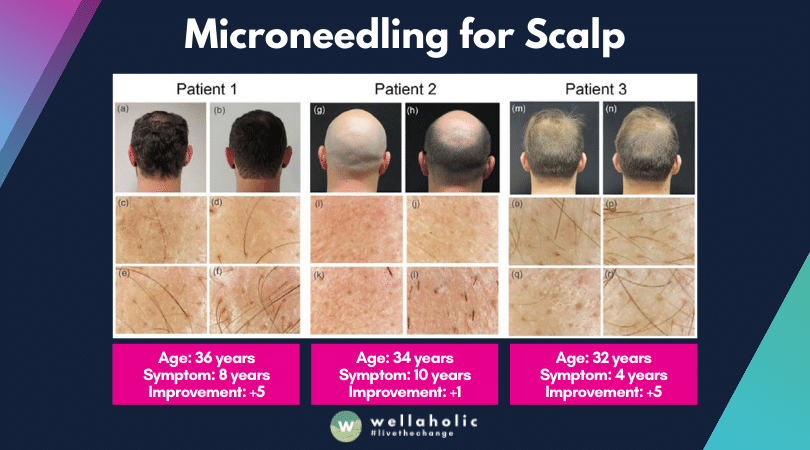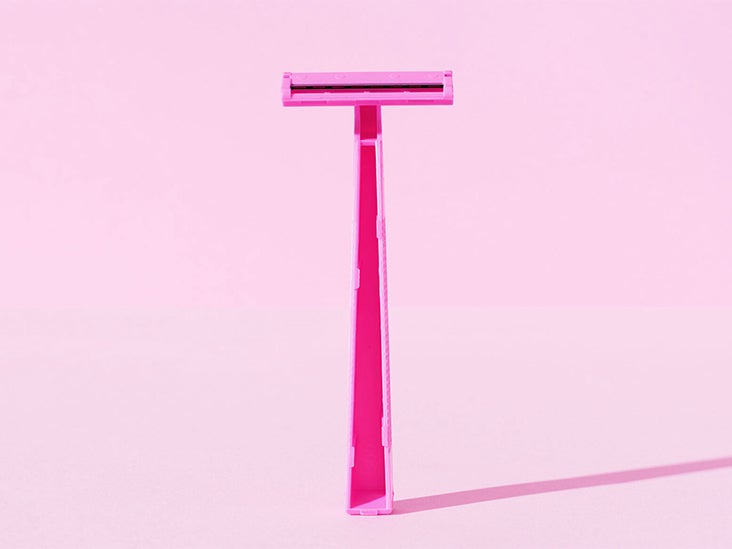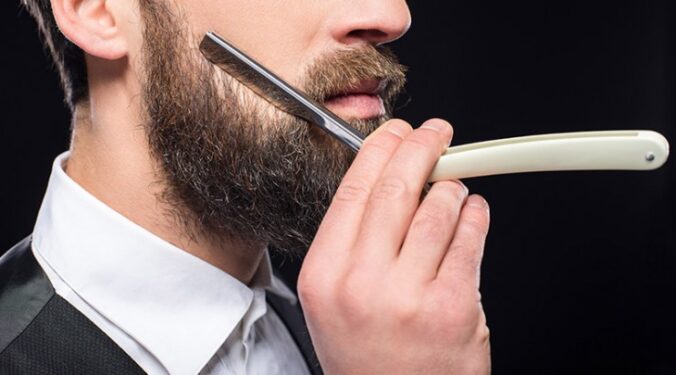Table Of Content

According to the American Academy of Dermatology Association (AAD), the skin’s healing process after microneedling can help reduce the appearance of scars and dark spots and improve skin elasticity. Any redness, irritation, and inflammation should be brief, and the procedure should never cause scarring. Of the six MN monotherapy groups, two noted significant increases to total hair counts, one found significant increases to hair diameters and total hair density, and three showed no effect [13, 18,19,20, 25, 27]. Microneedling for hair loss is generally considered safe, but like any medical procedure, there are potential side effects that patients should be aware of. Suitable for improving the effect of Minoxidide & other products on the scalp.
Performing Microneedling for Hair Loss at Home
The best hair growth products for men in 2023 - Yahoo Life
The best hair growth products for men in 2023.
Posted: Tue, 16 Jan 2024 08:00:00 GMT [source]
Animal studies in mice with before- and after-treatment photos suggest that microneedle stimulation alone induces enhanced hair growth, but larger, randomized human studies are needed. Kim et al.[6] also noted earlier and faster hair re-growth with more shiny texture of the hair in micro needle treated group than the untreated mice group. The authors also suggested that micro needle roller could be useful to treat hair loss refractory to Minoxidil therapy.
Microneedling for Hair Loss: Does it really work? Uses & Benefits
When you get a medication injected at a doctor’s office, a long needle is used. In order for the drug to be delivered properly, the needle generally needs to pass all the way through your skin. It should only be injected once it reaches its intended place, like your vein or muscle.
Dermaroller vs. Dermapen
Get ready to take action against that frustrating bald spot or thinning hair today, set up a complimentary FREE online consultation with one of our expert ForHair hair restoration specialists. By partnering with a ForHair Physician, we're dedicated to unraveling the root causes of your hair loss and determining the most suitable treatment path for your unique needs. Microneedling should not be performed too frequently, as it carries the risk of scarring and can limit blood circulation to the treated area, leading to hair shedding. Consulting with a physician is crucial to determine the ideal frequency and number of passes based on your specific needs.

Increasing Blood Flow to the Scalp
That said, scalp microneedling won't work for everyone, and the risks of at-home microneedling for hair loss with needles longer than 0.25 millimeters (mm) outweigh the potential benefits. Microneedling is sometimes used to help topical skin treatments to penetrate the skin more effectively. For example, microneedling is sometimes performed before application of minoxidil, used to treat common hair loss (androgenic alopecia, which affects both men and women).
If you’re dealing with hair thinning, it’s tempting to pick up an at-home microneedling device so you can get immediate results. But store-bought devices don’t compare to a professional microneedling treatment. If you typically use a topical hair loss product on your scalp, you should wait hours after microneedling before applying this product again. And don’t worry — the synergistic effect between microneedling and your topical hair loss product will still be achievable. Microneedling is believed to stimulate the stem cells found within hair follicles, which play a crucial role in hair growth and regeneration.
Does microneedling work to help promote hair growth?
Derma Roller for Hair Loss Treatment: Does It Work? - Healthline
Derma Roller for Hair Loss Treatment: Does It Work?.
Posted: Tue, 31 May 2022 07:00:00 GMT [source]
Microneedling is less expensive than laser therapy and may work better for some people. The average treatment starts by making sure your scalp is clean, then applying a mild numbing agent to the scalp. Although microneedling is unlikely to hurt, this can prevent you from feeling any discomfort or pain during and immediately after treatment. One common plan that exacerbates the side effects of microneedling is the immediate use of minoxidil after the procedure. Make sure to speak with your doctor about when to apply minoxidil after microneedling.
Study designs should consider 12-month durations, include groups using MN as a monotherapy, and evaluate MN against a placebo and/or untreated group. As an adjunct therapy, MN may improve AGA by enhancing transdermal delivery, and by improving sulfation and Wnt pathway expression when paired with topical minoxidil. Henry et al. demonstrated in vitro that 0.15 mm needles inserted into human skin for 10 seconds enhanced transdermal permeability of calcein by more than 1000-fold [41]. These effects may partly explain the equivalent and/or additive improvements to hair parameters from intradermal growth factors or PRP injections versus MN alongside their topical applications [16, 17]. Topical minoxidil is a pro-drug that requires sulfation by sulfotransferase enzymes in the outer root sheath of hair follicles [8].
Benefits of Microneedling

In most people, the hair follicle bulge containing specialized stem cells resides 1.00–1.80 mm below the skin's surface. However, using needles longer than 0.25 mm at home isn't recommended because it increases the risk of infection, scarring, or permanently damaging your hair follicles. As with any procedure that involves cutting the skin and creating an open wound, microneedling for hair loss does come with the risk of infection, says Kashian.
This technique is performed similarly to how micro-needling is done for skin problems, where a trained practitioner utilizes specialized tools such as skin rollers or derma rollers to create these minuscule punctures in the skin. 87.1 percent of patients who received minoxidil lotion, platelet-rich plasma (PRP), and microneedling were shown to retain their hair during a “hair pull” test, which is pulling on the hair to determine how much comes out. Only 64.5 percent in the group receiving PRP and minoxidil alone retained their hair during this test, and this declined to 48.4 percent for the control group, who only received minoxidil lotion.
According to Healthline, other common types of alopecia include traction alopecia, telogen effluvium, alopecia areata, central centrifugal cicatricial alopecia (CCCA), and lichen planopilaris (LPP). However, if your scalp is feeling very irritated, is bleeding, or very inflamed, the pressure was too much or the needle was too long. If at any point your scalp is feeling painful and irritated, stop and apply pressure more gently next time. After you have completed the front-to-back lines, you can complete the same steps going from one side to the other across your scalp, making sure to pick up the roller after each pass and rewetting the hair as needed.
Finally, Ragab et al. demonstrated that, over a 3-month period, MN alongside topical PRP improves SALT scores similarly to fractional CO2 laser therapy alongside topical PRP (Table 3) [29]. The information on HairScience is for informational purposes only and does not constitute medical advice. The information contained herein is not a substitute for and should never be relied upon for professional medical advice.






